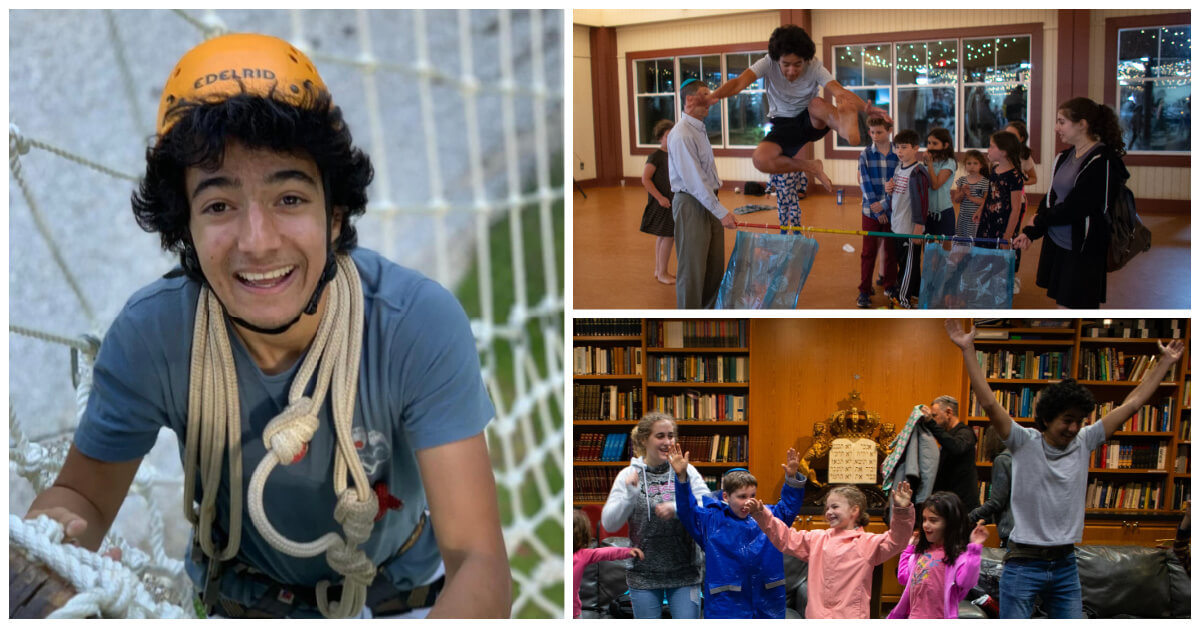Conservative Judaism’s ‘Vision Thing’
Conservative Judaism, the centrist denomination that once dominated American Jewish religious life, faces a crucial juncture this spring in its quest to halt a lingering decline.
The United Synagogue, the movement’s congregational arm, is set to hire a new executive officer, completing a wholesale generational change of guard in Conservative Judaism’s three major institutions. The leadership change could offer the movement a rare opportunity to reverse its fortunes.
But in an interview with the Forward, United Synagogue lay president Raymond Goldstein, who is directing the job search, hinted at difficulties in articulating a vision of future Conservative renewal. That could make it hard to find a transformational CEO able to implement such a vision.
Asked at one point what changes the movement might need to achieve renewal, Goldstein replied, half in jest, “If you have the answer, we’ll buy it from you.”
In fact, the movement already bought an answer, in the form of a three-year strategic study completed in 2004 by management consultant Jacob Ukeles, a specialist in Jewish organizations. Movement lay leaders cite the study as a blueprint, but balk at some key recommendations.
“The good news,” Ukeles wrote in a 2006 essay, is that “the USCJ has a plan. The bad news is,” he continued, “change has been glacially slow.”
Among other things, the movement has snubbed Ukeles’s proposal to direct greater resources toward regions offering the most promise for growth.
Currently, each of the United Synagogue’s 15 regional offices draws funding from its own region’s resources. Regions with many large congregations, such as New York and New Jersey, accumulate large budgets and support staff. Sparsely organized regions with growing Jewish populations in the South and West — precisely the areas with greatest growth potential — receive little support.
Ukeles recommended changing the funding rules. Goldstein says he can’t see it happening. “We still have more Conservative Jews in New York than in other parts of the continent,” he said. “So to say we should shift more dollars to places that don’t have numbers just doesn’t make sense.”
The changing of the Conservative guard began last September with the inauguration of Arnold Eisen, a noted sociologist of religion, as chancellor of the Jewish Theological Seminary, the venerable rabbinic seminary and academic center. This July, the professional association of the Conservative clergy, the Rabbinical Assembly, will install Rabbi Julie Schonfeld as its first female executive director. Once a new United Synagogue executive is hired, all three central institutions will have changed hands within a year, after decades without change.
Assuming, that is, that the United Synagogue finds a new executive vice president on time. The incumbent, Rabbi Jerome Epstein, is due to retire on June 30 after 23 years on the job. The search for his successor began about six months ago. Goldstein, a high-tech CEO from Minneapolis, appointed a 19-member search committee, mostly fellow board members, with himself as chair.
“They’re all committed to finding somebody who can lead us in a new direction,” Goldstein said. “Society has changed. New ideas and new concepts need to be looked at. We see this change in leadership as an opportunity to have a new person lead us.”
The committee has interviewed “about a half-dozen” candidates, most of whom are rabbis. It’s still looking.
Outside the organization’s boardroom, the secretive, slow-paced leadership search is fraying nerves. Conservative Judaism has suffered a malaise of self-doubt for years, its membership shrinking and aging while rival movements thrive. Eisen’s appointment to head the rabbinical seminary last year stirred hopes for a change of spirit at the top; eyes are now turned to the United Synagogue to choose a leader who can work with Eisen and bring the new tone down to the pews.
“The United Synagogue is having a hard time convincing its member synagogues that it matters,” said Rabbi Menachem Creditor of Congregation Netivot Shalom in Berkeley, Calif., who heads the Shefa Network, an online community of vaguely dissident Conservative “dreamers.” “The next executive director has the opportunity to reach into the synagogues and beyond and create a compelling narrative.”
On the other hand, numerous insiders warn, it’s also possible that the movement will simply fall off a cliff. “The movement faces serious issues, and choosing a new leader will help define the future — if there is a future,” said Rabbi Alexander Davis of Beth El Synagogue in Minneapolis.
The challenges facing the Conservative movement are daunting. The largest wing of American Judaism through much of the 20th century, it entered a slide sometime in the 1980s. By 2000, it had slipped to second place, after Reform Judaism. Today, more than one-third of Conservative congregants are older than 65, compared with about one-fifth each among Reform and Orthodox Jews. The Conservative movement has proportionally fewer children than either of the others. And more Conservative Jews, fully 57%, are beyond child-rearing years — empty-nest couples or aging singles — compared with 47% of Reform Jews and just 35% of Orthodox Jews, according to a 2006 study by Hebrew Union College sociologist Steven M. Cohen. In a real sense, the Conservative future is disappearing.
Emblematic of the malaise is the rise of something known as transdenominational Judaism. It consists of Jewish religious and cultural activists, mostly under 35, who reject denominational labels, viewing their Judaism as transcending the separate streams. Its best-known expressions are so-called independent minyanim, informal prayer groups that meet in community centers, synagogue basements or even churches, refusing synagogue affiliation. There are said to be at least 80 such groups across the country, with thousands of members. Their primary leaders, most observers say, are young graduates of Conservative schools, summer camps and even seminaries who continue to practice Conservative Judaism but reject the name and the institutions.
“It is a generational attitude that we can’t ignore,” said Stephen Wolnek, a United Synagogue past president who is a member of the executive search committee. “If you look at a lot of the transdenominational phenomena, basically they are Conservative. And unless we bring it within our congregations… then we are the losers.”
Goldstein said the movement has begun reaching out to the wandering youth. He cited a committee he created last year to help synagogues approach minyanim with offers of informal ties and assistance, including prayer space.
To many minds, Conservatism’s malaise is ideological. Critics often call the movement a half-hearted compromise between Reform and Orthodoxy. Unlike Reform, it teaches the authority of rabbinic law. Unlike Orthodoxy, it claims the right to legislate significant reforms, such as ordaining women and gay rabbis. Most Conservative laity simply disregard religious law, choosing the movement mainly for its blend of traditionalism and permissiveness. Wags call it Orthodox rabbis preaching to Reform congregants.
Movement activists, leaders and dissidents alike, reject that description, citing the very existence of breakaway trends as evidence that ideas are still vital. What’s needed, they say, is structural reform.
“Conservative Judaism is an incredibly exciting thing,” Creditor said. “The United Synagogue as an institution hasn’t fostered that idea.”
Will the next leader be able to transform the organization and help revitalize the larger movement? “My focus is on the congregations,” Goldstein said. Describing the other main institutions, he continued: “The seminary is about teaching students. The R.A. is about bringing our rabbis together. The movement is more than the congregations, but I don’t know what that larger process really is.”
The Forward is free to read, but it isn’t free to produce

I hope you appreciated this article. Before you go, I’d like to ask you to please support the Forward.
Now more than ever, American Jews need independent news they can trust, with reporting driven by truth, not ideology. We serve you, not any ideological agenda.
At a time when other newsrooms are closing or cutting back, the Forward has removed its paywall and invested additional resources to report on the ground from Israel and around the U.S. on the impact of the war, rising antisemitism and polarized discourse.
This is a great time to support independent Jewish journalism you rely on. Make a Passover gift today!
— Rachel Fishman Feddersen, Publisher and CEO
Most Popular
- 1

News Student protesters being deported are not ‘martyrs and heroes,’ says former antisemitism envoy
- 2

News Who is Alan Garber, the Jewish Harvard president who stood up to Trump over antisemitism?
- 3

Fast Forward Suspected arsonist intended to beat Gov. Josh Shapiro with a sledgehammer, investigators say
- 4
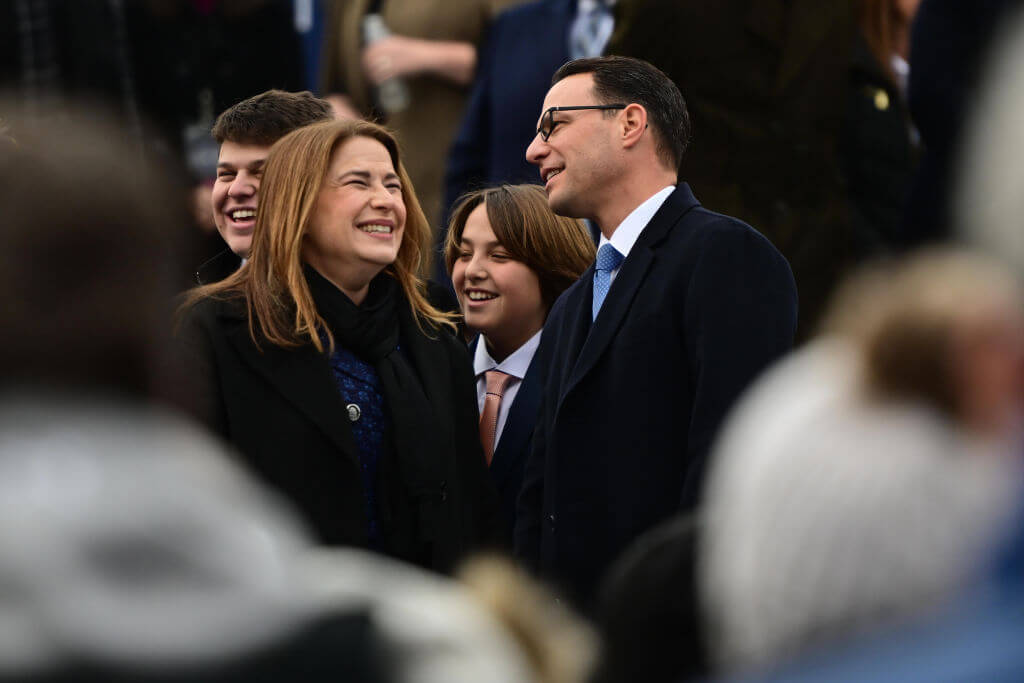
Politics Meet America’s potential first Jewish second family: Josh Shapiro, Lori, and their 4 kids
In Case You Missed It
-
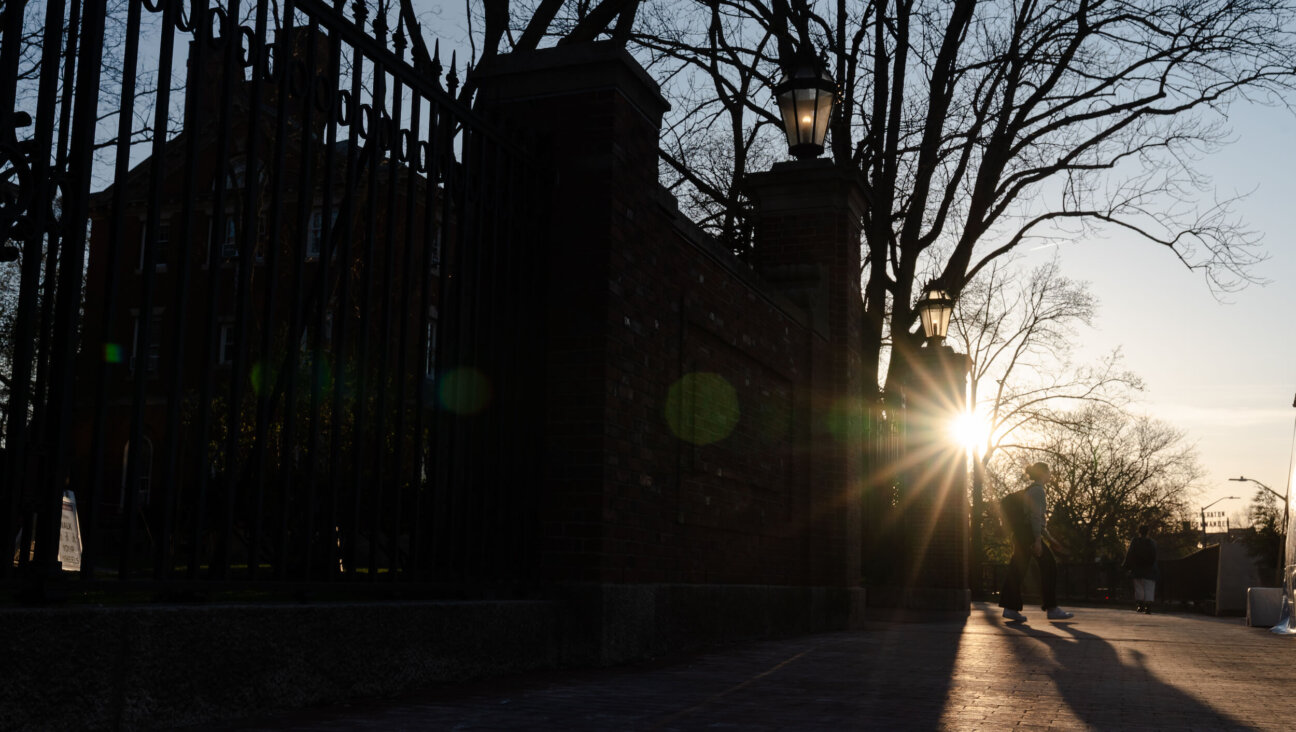
Opinion Why can Harvard stand up to Trump? Because it didn’t give in to pro-Palestinian student protests
-
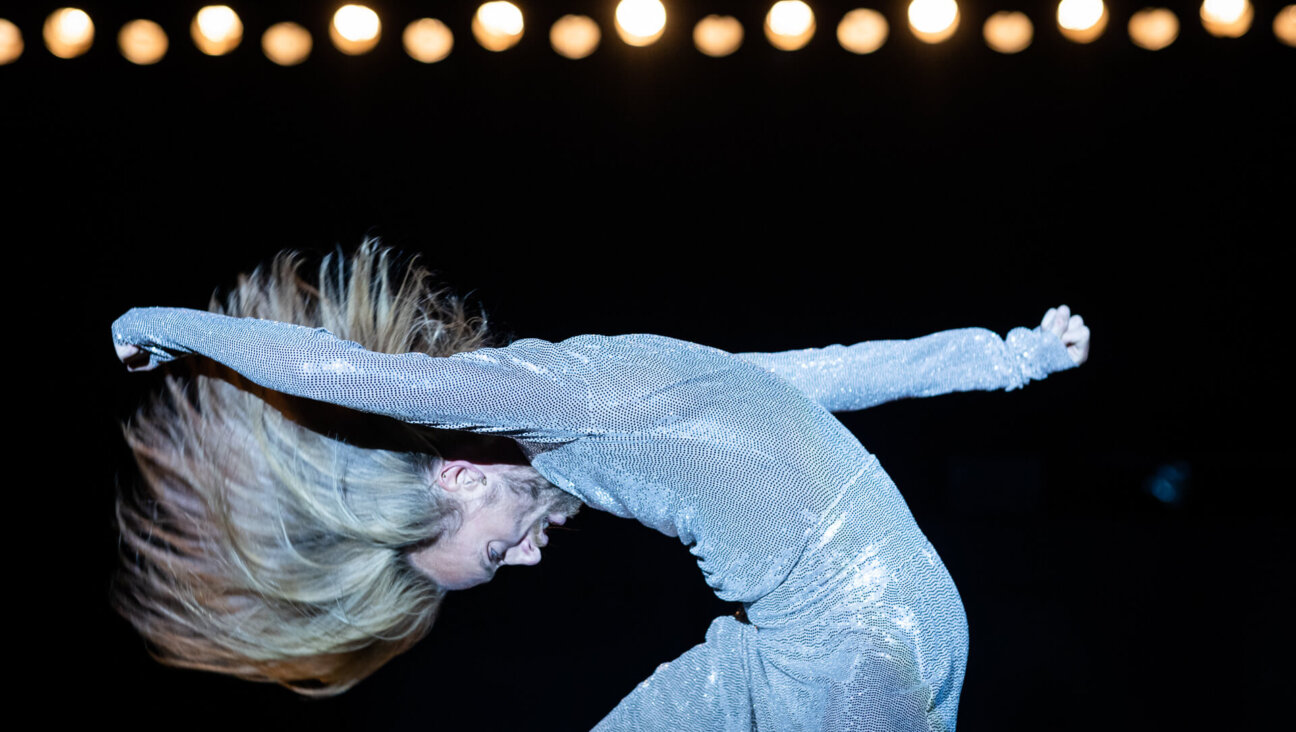
Culture How an Israeli dance company shaped a Catholic school boy’s life
-
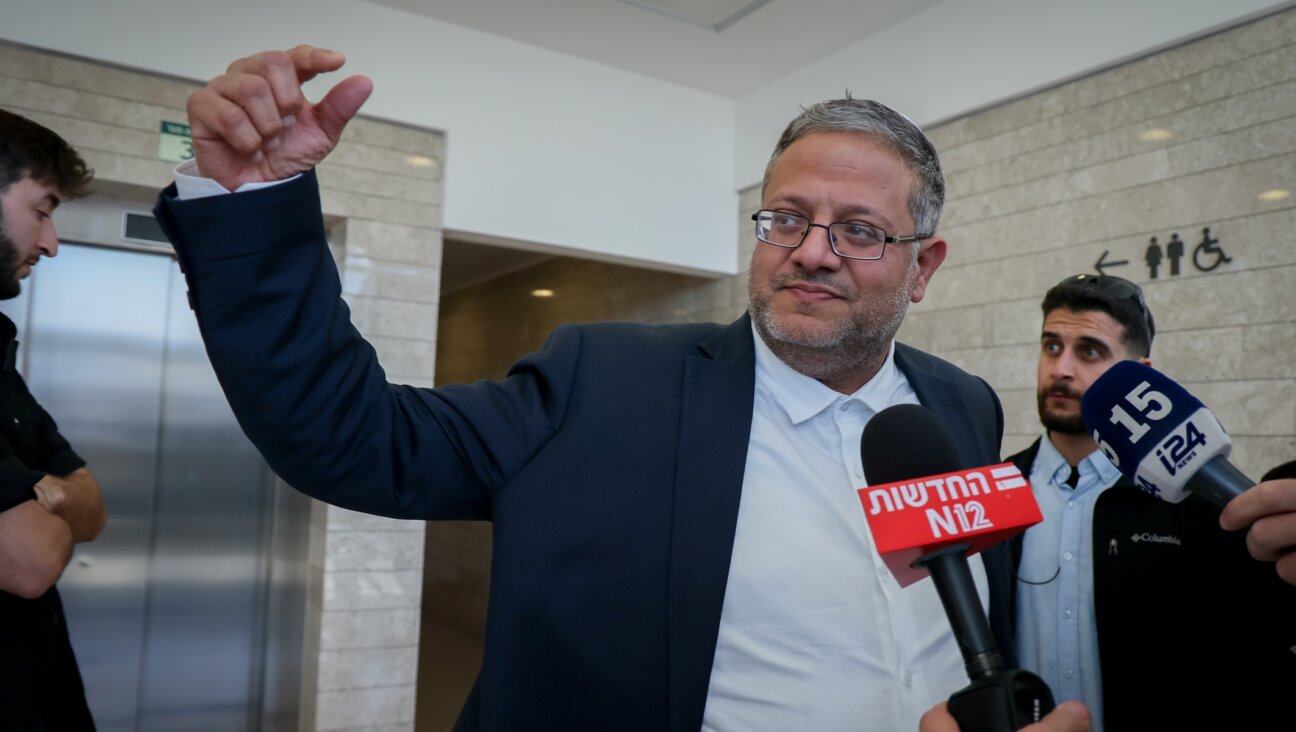
Fast Forward Brooklyn event with Itamar Ben-Gvir cancelled days before Israeli far-right minister’s US trip
-

Culture How Abraham Lincoln in a kippah wound up making a $250,000 deal on ‘Shark Tank’
-
Shop the Forward Store
100% of profits support our journalism
Republish This Story
Please read before republishing
We’re happy to make this story available to republish for free, unless it originated with JTA, Haaretz or another publication (as indicated on the article) and as long as you follow our guidelines.
You must comply with the following:
- Credit the Forward
- Retain our pixel
- Preserve our canonical link in Google search
- Add a noindex tag in Google search
See our full guidelines for more information, and this guide for detail about canonical URLs.
To republish, copy the HTML by clicking on the yellow button to the right; it includes our tracking pixel, all paragraph styles and hyperlinks, the author byline and credit to the Forward. It does not include images; to avoid copyright violations, you must add them manually, following our guidelines. Please email us at [email protected], subject line “republish,” with any questions or to let us know what stories you’re picking up.






